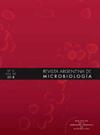Microbial diversity investigation using 16S metagenomics in Tunisian patients with systemic lupus erythematosus
IF 2.1
4区 生物学
Q4 MICROBIOLOGY
引用次数: 0
Abstract
Systemic lupus erythematosus (SLE) is a multisystemic autoimmune disease associated with significant morbidity and mortality. It is characterized by a loss of self-immune tolerance and autoantibody production, leading to multiple organ damage. Emerging investigations have confirmed the role of gut microbiota dysbiosis in patients with SLE, although the underlying mechanisms remain unclear to date. In this study, we aim to investigate the bacterial profile of SLE including phylum/class/genus relative abundance and diversity, to compare them with healthy controls and to study the correlation of relative abundance of different patterns with clinical/biological parameters. In this case–control study, the bacterial profile was investigated in 7 SLE patients and 7 healthy controls using 16S metagenomics clustering. The present study reported a low abundance of the class Bacilli (0.58% in SLE vs 1.26% in the controls), the genus Lactobacillus (0.43% vs 0.74%), as well as a higher abundance of the genera Gammaproteobacteria (2.37% vs 0.77%) and Escherichia–Shigella (2.04% vs 0.51%) in SLE samples compared to the controls (p < 0.05). We also found an association between the class Betaproteobacteria (4.42% vs 1.57%) and the genus Faecalibacterium (11.34% vs 3.35%) and renal manifestations (p < 0.05). The phylum Actinobacteria (0.21% vs 3.8%, p = 0.036) and the genus Bifidobacterium levels were lower in active SLE compared to the healthy controls. This study is the first report on the gut microbiota of SLE and the first case–control study in Tunisia and North Africa. We obtained a particular profile of bacterial gut microbiota for the SLE group. We found a specific clustering when compared to the healthy controls.
突尼斯系统性红斑狼疮患者16S宏基因组学微生物多样性研究。
系统性红斑狼疮(SLE)是一种多系统自身免疫性疾病,具有显著的发病率和死亡率。它的特点是丧失自身免疫耐受性和自身抗体的产生,导致多器官损伤。新出现的研究已经证实了肠道菌群失调在SLE患者中的作用,尽管其潜在机制迄今尚不清楚。在这项研究中,我们旨在调查SLE的细菌谱,包括门/类/属的相对丰度和多样性,并将其与健康对照进行比较,并研究不同模式的相对丰度与临床/生物学参数的相关性。在本病例对照研究中,采用16S宏基因组聚类方法对7例SLE患者和7例健康对照者的细菌谱进行了研究。本研究报告,与对照组相比,SLE样本中芽胞杆菌类(0.58%,对照组1.26%)、乳酸杆菌属(0.43%,对照组0.74%)丰度较低,而γ变形菌属(2.37%,对照组0.77%)和志贺氏杆菌属(2.04%,对照组0.51%)丰度较高
本文章由计算机程序翻译,如有差异,请以英文原文为准。
求助全文
约1分钟内获得全文
求助全文
来源期刊

Revista Argentina de microbiologia
MICROBIOLOGY-
CiteScore
3.30
自引率
0.00%
发文量
46
审稿时长
>12 weeks
期刊介绍:
La Revista Argentina de Microbiología es una publicación trimestral editada por la Asociación Argentina de Microbiología y destinada a la difusión de trabajos científicos en las distintas áreas de la Microbiología. La Asociación Argentina de Microbiología se reserva los derechos de propiedad y reproducción del material aceptado y publicado.
 求助内容:
求助内容: 应助结果提醒方式:
应助结果提醒方式:


